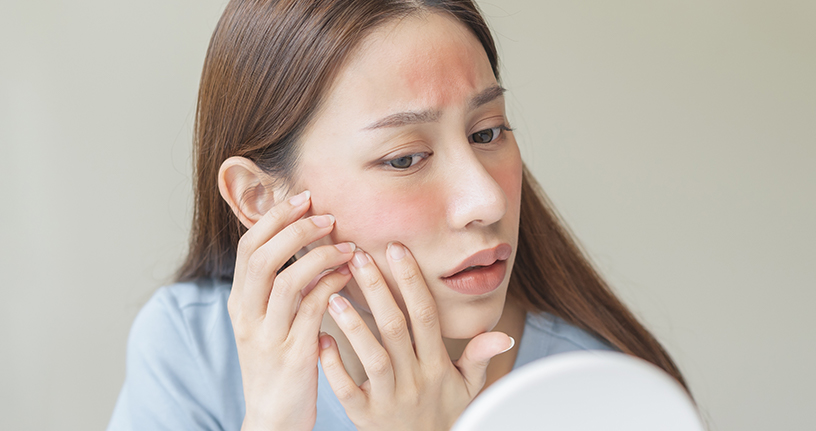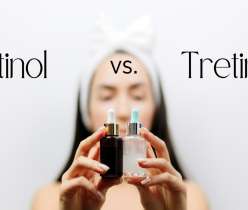Over-the-counter products are widely recommended by dermatologists and utilized by many people to treat and prevent common skin conditions. Read to learn about the best skin care for aging skin and acne.
An insight into OTC options
OTC products have long played an important role in patient’s self-treatment diseases. These product’s relative safety, effectiveness, availability, and cost-effectiveness probably contribute to their extensive popularity. The enormous retail sales of these caring skin products in the United States and globally readily reflect their popularity. Use of these skincare products is not, however, limited to physician recommendations. OTC product usage also represents one of the most important ways individuals manage and take responsibility for their health issues. It offers individuals a sense of personal autonomy with decisions regarding their healthcare requirements.
Many concerned mothers wonder about these medications’ safety while nursing a baby. While numerous brands and medications are available, a relatively small list of active ingredients exists in all those caring skin items. Careful review of the OTC product’s label is essential to the responsible and safe usage of these medicines. Some formulations have more than one active ingredient.
In general, topical OTC formulations work at the deepest layers of the skin and are poorly absorbed into the skin. Low blood levels mean even lower milk levels. However, the child should not be exposed to medicine residues on the skin or clothing. Remember that successful acne treatment always begins with good skin care.
Popular OTC skincare ingredients
Ingredients in today’s skincare products perform a lot of different functions.
Go to any market, and you might be overwhelmed by the sheer number of skincare items on the shelves. Whether you first try a skincare regimen or are a long-time user, knowing what specific skincare ingredients are in your most popular stretch mark cream or the best moisturizers can be beneficial.
Knowing what’s in your skincare products can be important information if you want something to help you with specific skin concerns. Skincare experts and dermatologists discuss some of the most popular skincare ingredients, what they do, and how they function. Let’s find some of the top OTC treatments for common skin conditions.
-
- Alpha hydroxy acids (AHA)
OTC skincare products contain alpha hydroxy acids, or AHA (lactic, glycolic, citric, and tartaric acids), which have become increasingly popular recently. Creams, gels, and lotions with alpha-hydroxy acids may help with fine lines, wrinkles, irregular pigmentation, and age spots. It is also effective at shrinking enlarged pores. Side effects of alpha hydroxy acids include mild irritation and sun sensitivity. To avoid a burning sensation, apply sunscreen daily in the morning. To skip skin irritation, start with a product with a maximum concentration of 10% to 15% AHA. To allow your skin to get used to it. To allow your skin to get used to it, you should apply it on an alternative day, gradually increasing it to daily application.
-
- Salicylic acid
Salicylic acid effectively removes dead skin and can improve the texture and color of sun-damaged skin. It penetrates oil-laden hair follicle openings, which helps treat acne. Numerous skincare items contain salicylic acid.
-
- Hydroquinone
Skin care products containing Hydroquinone are often called bleaching creams or skin-lightening agents. These skincare products help to lighten hyperpigmentation, such as dark spots and age spots (melasma or chloasma) associated with pregnancy or hormone therapy. It is always recommended to use Hydroquinone with sunscreen because sun exposure causes skin hyperpigmentation. If you are allergic to Hydroquinone, you may benefit from using products containing kojic acid instead.
-
- Kojic acid
Kojic acid is also considered a remedy for pigment problems and age spots. The best eye cream for dark circles usually contains Kojic acid, which reduces the darkness around your delicate eyes. Dermatologists believe that kojic acid works similarly to Hydroquinone. It is effective as a lightening agent, slowing melanin production, a brown pigment. With continued usage, kojic acid may make your skin susceptible to sunburn.
-
- Retinol
Get a retinol formulation to improve acne, scarring, pigmentation, fine lines, skin texture, skin tone, and hydration levels.
Retinol is derived from vitamin A and is present in numerous OTC skin aging skincare products. It is considered the best skin care for aging skin. Tretinoin is the main ingredient in prescription Retin A gel and Retino A cream, and tretin is a stronger version of retinol. If you have sensitive skin, using this prescription formulation over retinol cream is an excellent alternative. Vitamin A has the potential to boost collagen and elastin, which is a protein that strengthens your skin’s flexibility. Tretinoin is considered the best eye cream for wrinkles, effectively reducing facial fine lines.
-
- Hyaluronic acid
Skin care products containing this substance are often used with Vitamin C to support effective penetration. Choose the best vitamin C serum for the face and use hyaluronic acid. The skin care agent is well known for its ability to reverse or stop aging. Hyaluronic acid is a component of your body’s connective tissues and is believed to provide cushion for these tissues. With age, hyaluronic acid is destroyed naturally. Poor diet and smoking can also affect your body’s production of hyaluronic acid over time.




